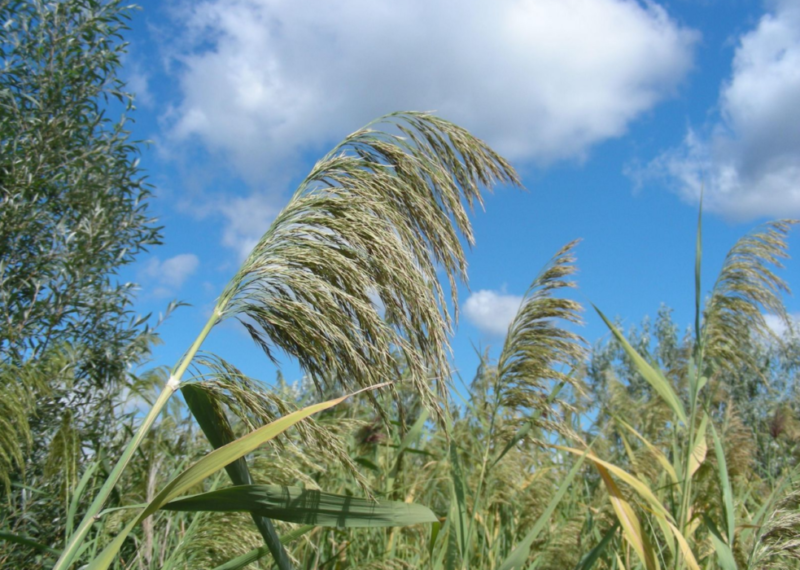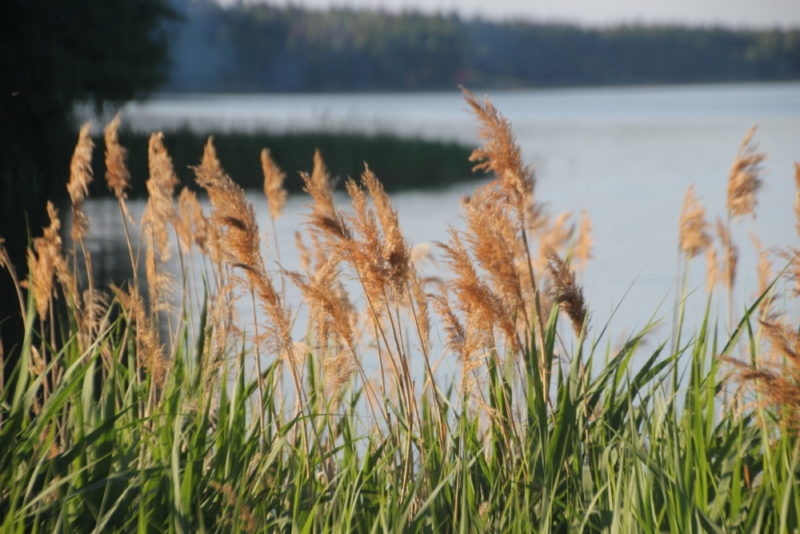Common reed is a perennial plant that every person has seen at least once in his life. It is common in mid-latitudes and beyond. You can not see it only in the Arctic or desert. Many medicinal properties are stored in this inconspicuous and familiar perennial.
Material Content:
Description of common reed
Southern reed (Phragmites australis) is a plant of the cereal family that has been living for several years.
Type Description:
- The root system of the reed is large and supplemented by a variety of subordinate roots. In search of groundwater, the plant is able to stretch its roots to a depth of 3.5 m. The thickness of the roots can be 3 cm.
- The root system can also pass over the topsoil. And the damaged parts of the root can quickly regenerate when damaged.
- The height of the plant can reach 5 m. However, the average size is 1-3 m. The stem is smooth and straight. It is flexible enough to withstand even the strongest gusts of wind. The stalk reaches a width of 2 cm and is hollow inside. After flowering is subjected to lignification.
- The leaves of the plant are rough to the touch and have a dark green color. Their shape is elongated, and the size reaches 50 cm.
- Cane inflorescence resembles a panicle about 25 cm in size. Contains a large number of spikelets, the fruits ripen in August or September. Inflorescences remain on stems for a long time after the end of the fruitful period.
Seeds germinate in conditions of excessive humidity and the presence of light at an average temperature of 23 ° C.
Plant habitat
Common reed is widespread. Representatives of this species can be found in almost all corners of the globe.
Reed grows on well-moistened soils. Most often it can be met off the coast of water bodies. Wetlands and wet sand soils are also attractive for this plant.
The lower part of the stem of the plant, as a rule, is in the water by an average of 35 centimeters. However, the reed feels great and, provided the stem is immersed in water for 1 meter.
Collection and harvesting of raw materials
The leaves and stems of the southern reed are harvested for medicinal purposes from May to June, while they are young and filled with the greatest number of useful properties.
Drying of raw materials is carried out in ventilated rooms. Parts of the plant are laid in a thin layer and periodically turned over.
For medicinal purposes, the roots of the plant are also used.
Reed rhizome harvesting:
- With a rake or other suitable device, roots are taken out of the water ground.
- Cut parts of the roots that were outside the soil, as well as small roots.
- The raw materials are washed with water.
- Dry for several hours.
- Dried in ovens and other thermal appliances at a temperature of 55 ° C.
Properly dried cane crunches when broken and has a pleasant aroma.
The shelf life of dried root is 3 years. Stems and leaves can be stored for 1 year.
In what areas is applied
Reed has been widely used in many areas of human activity.
Reed Application:
- In folk medicine. Young cane, which has not entered the flowering phase, contains vitamin C, cellulose, fiber, carotene and other useful components. Directly in the leaves there are many vitamins, volatile and carotene.
- For food purposes. Dried roots can be used in the manufacture of bread. Cane can also be a coffee substitute. Young shoots that have not yet turned around are eaten even raw. In addition, they are pickled and boiled, added to soups, mashed potatoes and vinaigrette.
- In economic activity. Cane is used for the manufacture of paper products, weaving baskets and mats from it. Compressed in a special way, it is used in construction.
- Making musical instruments. Since ancient times, the plant has been used in the manufacture of flutes and flutes.
- Livestock feed. Reed has a high silage yield.
Southern reed is widely applicable in many sectors of the economy.
The plant has a large number of useful properties and qualities, which allows you to use it not only for medicinal purposes, but also for various household needs.
The value of reeds in nature
Reed beds play an important role in nature.
The plant quickly absorbs moisture from the soil. Not returning water back to the ground, contributes to its drying out. Overgrown reeds can drain a swamp or small pond over time.
Reed is also actively involved in the formation of peat deposits.
The plant serves as food for a large number of animals, including elk, nutria and muskrat.
How to deal with a plant of the cereal family
Despite the huge number of useful properties and widespread use for household purposes, reed is a malicious weed and pest for agricultural plantations.
It is widespread on lands that undergo significant irrigation. Especially relevant is the fight against this weed when growing rice and cotton. But even in the conditions of summer cottages, southern reed can cause a lot of trouble to farmers.
The plant quickly and easily multiplies. Small parts of the roots sprout easily, giving life to new plants.
Reed control is successful with the following measures:
- Installation of drainage in the soil, which contributes to the drainage of excessively moistened areas and prevents the reproduction of plants.
- Along with drainage, it is advisable to apply the cessation of irrigation and drainage of the upper horizons of the soil.
- Use of herbicides. The only drug that can help is roundup.Its effect adversely affects any vegetative plant. Substances penetrate the foliage and kill the roots of the plant. The effect of the drug becomes noticeable on the 8-10th day after application.
- Deep loosening of the soil. This operation can be done once every 3-4 years. The depth of cultivation should be up to 30 cm.
As well as the prevention and inhibition of the distribution of reeds on agricultural lands, crop rotation is used for cultivation. For example, rice is replaced with crops that do not require frequent watering.
Reed is distributed almost throughout the globe. No less widespread is its use in the national economy. Medicinal preparations made from cane have anti-inflammatory, antipyretic, diuretic and diaphoretic properties. At the same time, the plant is a dangerous weed, which is not so easy to get rid of.


















